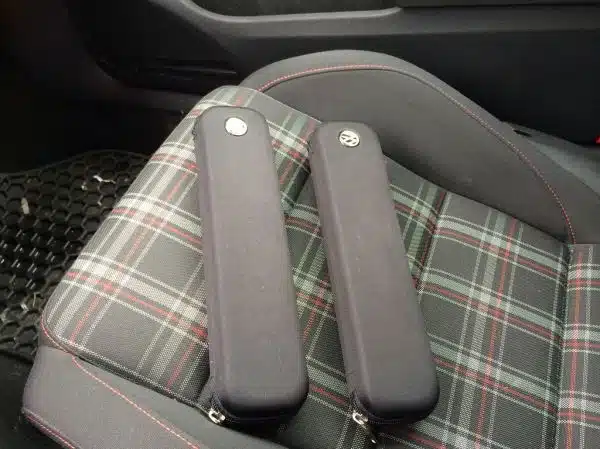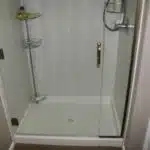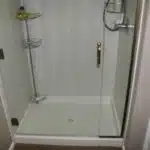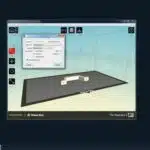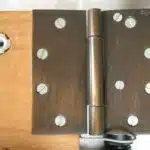Pocket doors are a popular solution for homeowners who want to save space and add a touch of elegance to their homes. Pocket doors slide into the wall, eliminating the need for a door that swings open and takes up valuable floor space. However, like any other mechanical component in your home, pocket doors can become damaged or malfunction over time. Repairing pocket doors can be tricky, but with the right knowledge and tools, it is possible to restore them to their former glory.
As an expert in pocket door repair, I have seen countless cases of homeowners struggling with malfunctioning or damaged pocket doors. In this article, I will provide you with step-by-step instructions on how to repair pocket doors so that you can save money on costly repairs and enjoy the convenience of your sliding door once again. From diagnosing common issues such as stuck rollers or broken tracks to replacing hardware components and adjusting alignment, this guide will equip you with all the information you need to successfully repair your pocket door.
Common Issues With Pocket Doors
Common issues with pocket doors are numerous. They can be caused by various factors, such as poor installation, age, or simple wear and tear. One of the most common causes of pocket door problems is misalignment. When the track that guides the door becomes worn or damaged, it can cause the door to come off-track or become difficult to slide.
Another common issue with pocket doors is sticking. This occurs when the rollers that allow the door to slide become dirty or damaged, causing them to stick in their tracks. Prevention tips for this issue include regular cleaning and lubrication of the rollers and tracks.
DIY vs professional help is often a consideration when repairing pocket doors. While some minor issues can be addressed with basic tools, more complex problems may require professional assistance. It’s essential to consider your level of expertise before attempting any repairs yourself, as improper handling can cause further damage and end up being more costly in the long run.
Assessing The Damage
- In order to repair a pocket door, it is important to first identify the root of the problem.
- After the problem has been identified, the pocket door must be removed from the track for further examination.
- The track should be carefully examined for signs of wear and tear, or any other potential issues which may have caused the door to malfunction.
- Any hardware or components which have become corroded, worn, or damaged should be replaced.
- All other components should be thoroughly cleaned, including the track, rollers, and hinges.
- Finally, the door should be reinstalled and tested for proper operation.
Identifying The Problem
One of the most common problems you may encounter with a pocket door is difficulty opening or closing it. It’s important to identify the cause of the issue before attempting to fix it. In some cases, the problem may be due to an obstruction inside the track, such as dirt or debris. Other issues may stem from improper pocket door installation or lack of regular pocket door maintenance.
If you’re having trouble with your pocket door, start by examining the track and rollers for any signs of damage or wear. Check for any visible obstructions that may be preventing the door from sliding properly in its track. Next, inspect the hardware on both sides of the pocket door to ensure that everything is securely in place and functioning correctly.
It’s also a good idea to assess whether there are any issues with the walls surrounding your pocket door. Uneven or warped walls can cause misalignment in your pocket door system that may lead to difficulty opening and closing your doors. By identifying these problems early on and taking steps to address them promptly, you can keep your pocket door operating smoothly for years to come without needing extensive repairs.
Removing The Door
After assessing the potential causes of difficulty in opening or closing your pocket door, it’s time to evaluate the extent of the damage. Sometimes, removing the door is necessary to get a better look at what’s going on behind the scenes. This is especially important if there are any visible signs of wear or damage on either side of the door.
One common mistake many homeowners make when removing their pocket doors is failing to properly support and protect them during removal. Pocket doors can be surprisingly heavy, so it’s important to enlist the help of a partner to assist you in lifting and carrying them out of their tracks. Additionally, it’s essential to take extra care not to scratch or damage the surrounding walls during removal.
If you’re having trouble removing your pocket door or prefer an alternative method for assessing any underlying issues, consider contacting a professional repair service for assistance. They’ll have access to specialized tools and equipment that can help identify potential problems without causing further damage to your door or walls. With careful assessment and prompt repairs, you can ensure that your pocket door system runs smoothly and reliably for years to come.
Examining The Track
After properly removing the pocket door, the next step in assessing any underlying issues is to examine the track. The track is an essential component of a pocket door system, as it guides the door along its path and ensures that it opens and closes smoothly. Over time, dust, dirt, and debris can accumulate in the track, causing friction and making it difficult for the door to move.
One effective method for examining the track is through track cleaning and lubrication techniques. Cleaning the track involves removing any accumulated debris or obstructions that may be hindering the door’s movement. This can be done using a soft-bristled brush or vacuum cleaner attachment. Once the track is clean, lubrication techniques can be used to keep it running smoothly. There are various types of lubricants available on the market specifically designed for use on pocket doors.
Regular maintenance of your pocket door system can help prevent future difficulties with opening and closing your doors. It’s recommended to clean and lubricate your tracks at least once a year, or more frequently if you notice any signs of wear or damage. By taking these simple steps, you can ensure that your pocket doors operate reliably for years to come.
Tools Needed For Repair
To effectively repair a pocket door, there are certain tools that you will need. Having these tools at hand will make the process of repairing your door much easier and efficient. Some of the primary tools you will require for this job include a drill, screws, screwdriver, level, measuring tape, pliers, and a hammer.
It is important to ensure that your tools are well-maintained before starting any DIY repair project. This is because poorly maintained tools can cause injuries or substandard results. You should regularly check your tools for wear and tear and replace any damaged ones immediately. Always keep them clean and lubricated to prevent rusting and other forms of damage.
In addition to having the right tools for the job, there are some DIY repair tips to consider when repairing a pocket door. For instance, it’s important to carefully measure the dimensions of the door frame so that you can accurately fit the new door into place. Additionally, ensure that all screws are tightly fixed in place to prevent the door from becoming loose or falling off its tracks over time. By following these tips and properly maintaining your tools, you’ll be able to effectively fix your pocket door in no time.
As you proceed with repairing your pocket door using the aforementioned tools and DIY tips, it’s crucial to take necessary safety precautions. Accidents can happen at any time during repairs if adequate safety measures aren’t taken into consideration. These could range from minor cuts or bruises to severe injuries such as electrocution or falls from heights if proper care isn’t taken while using ladders or working on high places. In our next section we’ll discuss some important safety measures that must be taken when fixing a pocket door.
Safety Precautions To Take
When it comes to repairing a pocket door, safety precautions should always be taken. Before starting any repair work, make sure you have the necessary safety gear on hand. This may include gloves, eye protection, and a dust mask to protect against potential hazards such as splinters or sawdust.
In addition to wearing protective gear, it’s important to be aware of potential hazards that may arise during the repair process. These can include sharp edges on the door or track, as well as electrical wiring if your pocket door has an automatic opener. Take extra care when handling these components and make sure to turn off power before attempting any repairs.
Remember that safety should always come first when repairing a pocket door. By taking the necessary precautions and being aware of potential hazards, you can ensure a safe and successful repair process. In the next section, we will discuss how to safely remove the door from the track in order to proceed with repairs.
Removing The Door From The Track
Imagine a train running on its tracks. The locomotive pushes forward, and the carriages follow in a straight line until they reach their destination. Pocket doors are similar to trains, but instead of transporting passengers, they lead you to another room. However, like trains, pocket doors also require maintenance and repair.
Removing the door from the track is one of the first steps in repairing your pocket door. It’s essential to ensure that nothing obstructs the door before removing it from the track. You can do this by opening and closing it several times to check for any obstructions or debris that may prevent it from sliding smoothly.
Once you’ve cleared any obstructions, you can proceed with removing the door from the track. Start by locating the two small release levers located at the bottom of each roller assembly. Using a flathead screwdriver or your fingers, push down on each lever simultaneously while pulling out on each side of the door to lift it off of the track. After removing the door, clean both sides of it thoroughly with a soft cloth before moving onto cleaning the track itself.
- Cleaning Track
- Remove any debris or dust using a vacuum cleaner.
- Apply lubrication oil on both sides of each roller assembly for smooth movement.
Now that you have removed your pocket door from its track and cleaned both sides of it thoroughly let’s move onto fixing stuck rollers.
Fixing Stuck Rollers
After successfully removing your pocket door from the track, the next step is to examine the rollers. Over time, the rollers may accumulate dirt and debris that prevent them from functioning correctly, causing your door to stick or become difficult to operate. Cleaning the rollers is a crucial step in repairing your pocket door.
To clean your pocket door rollers, you’ll need a few items such as a screwdriver, soft-bristled brush, and a lubricant. First, use a screwdriver to remove any screws holding the roller assembly in place. Then use a soft-bristled brush to remove any accumulated dirt and debris from both the roller and track. Once everything is clean, apply lubricant on the roller’s moving parts to ensure proper operation.
Lubrication techniques can vary depending on what type of lubricant you choose to use. Silicone spray lubricants are popular because they work well for reducing friction between metal parts. However, if you prefer something more natural or eco-friendly, you can also try using beeswax or paraffin wax as an alternative. Whatever you choose, be sure to follow all manufacturer instructions for application and safety precautions when handling these products.
Now that we have covered cleaning and maintaining your pocket door’s rollers let us move onto replacing broken tracks. A faulty or damaged track can cause significant problems with your pocket door operation. In our next section, we will go over how to inspect and replace broken tracks effectively while ensuring that your pocket door operates correctly for years to come.
Replacing Broken Tracks
Imagine you’re driving your car down a winding road, and suddenly you hit a pothole. The impact causes your tires to veer off the track, making it difficult for you to keep moving forward. Similarly, when the tracks of a pocket door break, it can cause the door to become misaligned and difficult to open or close properly.
Replacing broken tracks is an important step in repairing a pocket door. It’s also one of the most expensive repairs, costing anywhere from $100 to $300 depending on the complexity of the job and quality of materials used. Additionally, it can take several hours or even days to complete depending on the extent of damage.
When replacing tracks, there are different types and qualities of materials that can be used. Nylon and metal are two common types of materials used for tracks with varying degrees of durability. Choosing high-quality materials may increase the longevity of your repair job but could come at an added cost. It’s essential to consider both material type and quality when selecting materials for this repair job.
With new tracks installed, adjusting alignment is the next step in restoring proper functionality to your pocket door. This process involves fine-tuning the rollers that sit inside the track so that they move smoothly along its length without deviating from their intended path. Proper alignment ensures that your door opens and closes easily while preventing future damage caused by misalignment or wear and tear on other parts of your pocket door system.
Adjusting Alignment
If your pocket door is not sliding smoothly, it may be due to misalignment. To adjust the alignment of a pocket door, you will need to focus on adjusting the rollers. First, locate the roller adjustment screws at the bottom of the door. Use a screwdriver to turn these screws to adjust the height of each roller until they are level with each other and properly aligned with the track.
Another technique for realigning a pocket door is by adjusting the height of the track itself. This requires loosening the screws that secure the track to its mounting bracket and carefully raising or lowering it until it is level with both rollers. Once you have adjusted both rollers and tracks as needed, test your door’s movement by sliding it back and forth multiple times. If there is still resistance or difficulty in movement, further adjustments may be necessary.
Adjusting rollers and realignment techniques are essential steps for repairing a pocket door that has issues with alignment. With patience and attention to detail, you can ensure that your pocket door glides smoothly and effortlessly again.
Transition: While realignment techniques can often solve alignment issues with pocket doors, sometimes damaged hardware may require repair or replacement. In such cases, here are some tips on how to repair damaged hardware on your pocket door.
Repairing Damaged Hardware
When repairing a pocket door, one of the most common issues is damaged hardware. Over time, hardware can become worn down or damaged due to frequent use or improper installation. In order to fix this issue, it may be necessary to replace the damaged hardware.
Replacing hardware on a pocket door can be a simple process with the right tools and knowledge. First, identify what type of hardware needs to be replaced by inspecting the door and its components. Once you have identified the specific piece of hardware that needs replacing, purchase a replacement kit or individual parts from a local hardware store.
Common Hardware Issues:
- Bent or misaligned rollers
- Loose track
- Worn out handles
- Broken latch
Prevention Tips:
- Regularly clean and lubricate all hardware components to prevent wear and tear.
- Avoid slamming the door shut as this can cause damage to the rollers and track.
- Ensure proper installation by following manufacturer instructions or hiring a professional.
By following these tips and properly maintaining your pocket door’s hardware, you can prevent common issues from occurring in the first place. However, if you do experience any problems with your pocket door’s hardware, don’t hesitate to seek out professional assistance in order to ensure proper repairs are made.
Transition: Now that we have covered how to repair damaged hardware on a pocket door, let’s move on to fixing another common issue – a door that won’t stay closed.
Fixing A Door That Won’t Stay Closed
A common issue with pocket doors is that they won’t stay closed, which can be frustrating for homeowners. The cause of this problem is often due to wear and tear on the door’s hardware over time. Common causes include loose or broken rollers, a worn-out track, or misaligned hardware.
DIY solutions for fixing a door that won’t stay closed involve identifying the root cause of the issue and addressing it accordingly. For example, if the rollers are loose or broken, they can be replaced with new ones. If the track is worn out, it may need to be sanded down or replaced entirely. Misaligned hardware can often be fixed by adjusting the position of the door in its frame.
Preventative measures and long-term fixes for this issue involve regular maintenance and upkeep of the door’s hardware. This includes lubricating the track and rollers with silicone spray to reduce friction and wear over time. Additionally, keeping the track clean from dust and debris will prevent build-up that can cause further damage to the door’s components. By taking these preventative measures, homeowners can prolong their pocket door’s lifespan and avoid future issues.
Transitioning into our next section about lubricating the track and rollers, we will discuss how to properly apply silicone spray to keep your pocket door running smoothly.
Lubricating The Track And Rollers
Regular lubrication of the track and rollers is an essential part of maintaining your pocket door. Not only does it improve the functionality of the door, but it also helps to prevent premature wear and tear on the components. By regularly lubricating your pocket door, you can avoid costly repairs down the line.
When it comes to selecting a lubricant for your pocket door, there are a few options available. Silicone spray is an excellent choice as it leaves no residue and does not attract dust or debris. Petroleum-based lubricants are also effective, but they tend to attract dirt and dust over time. Be sure to avoid using grease or oil-based lubricants as they can cause buildup on the track and rollers.
To apply the lubricant, first clean any debris from the track with a dry cloth. Then apply a small amount of lubricant directly onto the track and rollers. Use a clean cloth to spread the lubricant evenly over all surfaces. Be careful not to use too much as excess lubricant can attract dirt and debris.
With your pocket door now properly lubricated, you can move on to reinstalling the door back into its frame.
Reinstalling The Door
After lubricating the track and rollers, the next step in repairing a pocket door is reinstalling the hardware. This involves carefully aligning the rollers with the track and securing them in place with screws. It’s important to use a level to ensure that the door is properly aligned, as even a slight tilt can cause it to stick or come off its tracks.
Before reinstalling the door, it’s also important to inspect the hardware for any damage or wear. If any components are worn or damaged, they should be replaced before proceeding with reinstallation. This will help ensure that the door operates smoothly and reliably.
Once all of the hardware has been inspected and installed, it’s time to test the door’s functionality. Open and close it several times to make sure that it moves smoothly along its track without sticking or jumping off course. If everything seems to be working properly, congratulations! You have successfully repaired your pocket door.
Testing The Door’s Functionality
Now that you have completed the repair process, it is essential to test the functionality of the pocket door. Testing techniques are necessary to ensure that your efforts were successful and that you can avoid any further problems in the future. The first step is to open and close the pocket door multiple times to see if it slides smoothly along its track.
If there is still resistance or difficulty moving, consider troubleshooting strategies such as adjusting the rollers or realigning the track. Additionally, check for any loose screws or damaged hardware that could be hindering movement. It is crucial to address these issues promptly before they become more severe and require extensive repairs.
Once you have confirmed that the pocket door slides smoothly along its track, perform a final check by latching and unlatching it. If there are no issues with this step, then congratulations! You have successfully repaired your pocket door. Remember to maintain your pocket door by performing regular preventative maintenance tips to prevent future problems from occurring.
Preventative Maintenance Tips
To ensure that your pocket door remains functional for a long time, it is important to perform regular preventative maintenance. One of the easiest ways to keep your pocket door in good condition is by cleaning it regularly. Dirt and dust can accumulate on the tracks, causing the door to become difficult to slide open and closed. To clean your pocket door, use a soft cloth or brush to remove any debris from the tracks and wipe down the door itself.
In addition to cleaning, lubrication is another important aspect of preventative maintenance for pocket doors. Over time, the rollers and tracks can wear down and become damaged, leading to difficulty opening and closing the door. Applying a lubricant such as silicone spray will help reduce friction between these components and extend their lifespan.
To further prevent damage to your pocket door, avoid slamming or forcefully pushing it open or closed. This can cause misalignment of the rollers, making it difficult to slide the door along its track. By taking care when using your pocket door, you can prevent unnecessary wear and tear that could lead to costly repairs down the line.
- Regularly clean debris from tracks
- Lubricate rollers with silicone spray
- Avoid slamming or forcing open/closing pocket door
- Conduct routine inspection for signs of wear or damage
It’s important to remember that even with regular preventative maintenance, sometimes issues with your pocket door may require professional assistance. In some cases, damage may be too severe for simple repairs and replacement parts may be necessary. If you notice any unusual sounds or resistance when using your pocket door, it’s best to call a professional as soon as possible before further damage occurs.
When To Call A Professional
As a pocket door repair expert, it is important to understand when a homeowner can take on the task of fixing their own pocket door and when they should call in a professional. While there are minor repairs that homeowners can handle, there are also certain situations where attempting to repair a pocket door on your own can lead to costly damages.
When it comes to DIY repairs, homeowners should only attempt small fixes such as tightening loose screws or lubricating the tracks of the door. More complex repairs like replacing the rollers or track should be left to professionals who have experience and expertise in handling these types of repairs. Attempting these more complicated fixes without proper training and tools could lead to further damage and costly mistakes.
If you find yourself unsure about whether or not you should take on a pocket door repair, it is always best to err on the side of caution and contact a professional. Not only will they be able to assess the situation and provide an accurate diagnosis, but they will also have access to specialized tools and materials that will ensure a long-lasting repair. By finding professionals who specialize in pocket door repairs, homeowners can rest assured that their doors will be fixed correctly the first time around, saving them time and money in the long run.
Conclusion
As a pocket door repair expert, it is crucial to educate individuals about common issues with pocket doors and how to fix them. After all, who doesn’t love a good challenge of fixing things around the house?
Assessing the damage is essential before starting any repair work. Tools such as screwdrivers, pliers, and hammers are necessary for repairing a pocket door. However, let’s not forget the importance of safety precautions when handling these tools. The last thing we want is someone getting hurt while trying to fix their beloved pocket door.
Removing the door from the track can be tricky for some individuals, but with proper guidance and patience, it can be done with ease. Reinstalling the door and testing its functionality should be carried out with utmost care to avoid further damages.
While preventative maintenance tips can help prolong the life of your pocket door, there may come a time when calling a professional is necessary. As much as we would love to believe we are experts in everything DIY-related, sometimes it’s better to leave things to those who have more experience than us.
In conclusion, whether you’re an experienced DIY enthusiast or a beginner trying your hand at home repairs – repairing a pocket door can be accomplished by anyone willing to put in some effort. With these steps outlined in this article, you’ll have your pocket doors functioning like new in no time!
Image Credits
- “OEM Door Pocket Umbrellas” by mk6_mike (featured)

